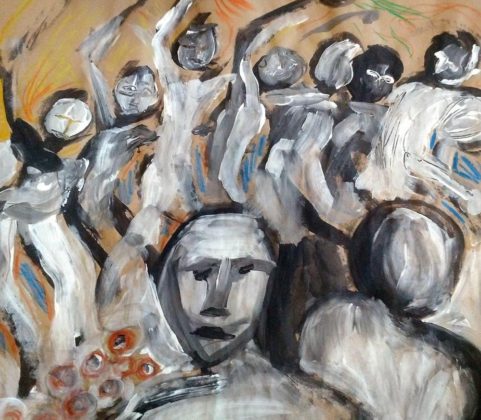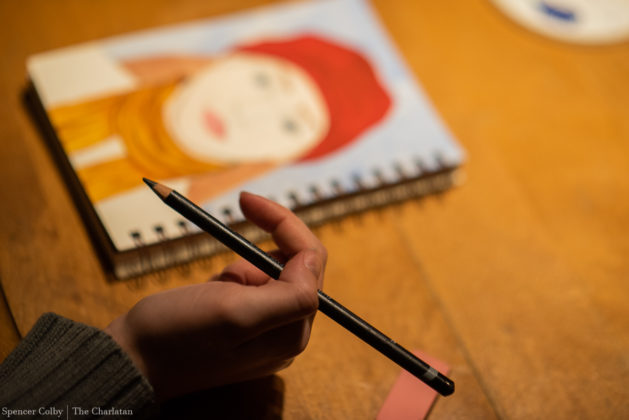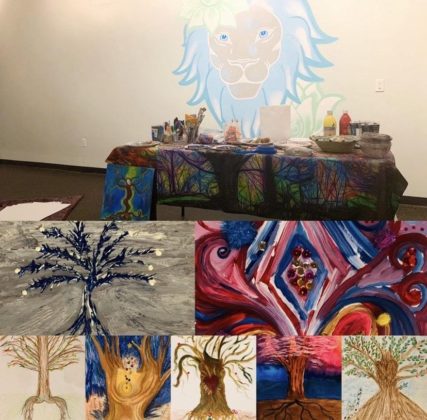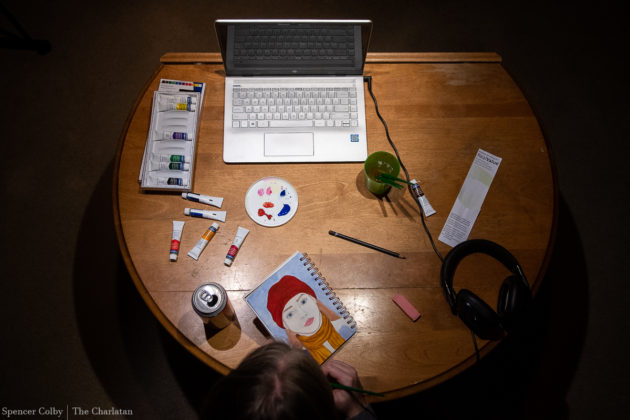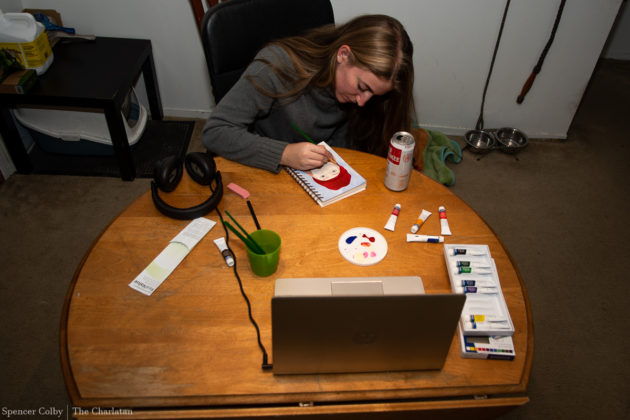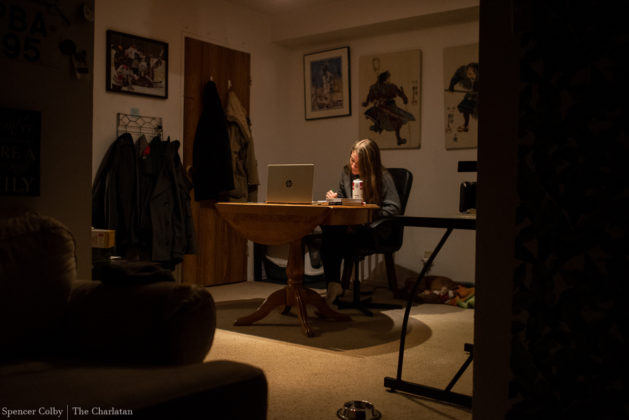While some people think of therapy as talking about their problems, others are using paintbrushes, clay and all kinds of other art materials to understand, explore and express their feelings through art therapy.
The Canadian Art Therapy Association states art therapy “combines the creative process and psychotherapy, facilitating self-exploration and understanding.”
Art facilitates a non-verbal means for people to express themselves. For those who find verbal conversations difficult due to their age or past experiences such as trauma, mental health issues or physical conditions, art therapy provides another outlet.
When people find it difficult to articulate their problems, art therapy offers a universal language for them to understand and express what’s going on.
More than a hobby
Art therapy is unlike the art many people enjoy doing for fun or as a hobby in many ways.
Art therapy sessions can be done individually or in groups. Darlene Kuehn, a registered psychotherapist in Ottawa, said she sees group therapy sessions as more self-reflective, which has a different focus from traditional therapy.
“For self-reflection, people don’t come in with a problem,” Kuehn said. “They might just want to explore and learn more about themselves and others.”
Traditional therapy, on the other hand, typically has an intention to solve issues, such as anxiety, trauma, or depression.
Sandra Grew, an Ottawa-based registered psychotherapist, art therapist and certified counsellor, said participating in art therapy with others has therapeutic benefits.
“A group session gives people an opportunity to share,” Grew said. “It normalizes what you are going through.”
Grew said when people do art as a hobby, they always have an end product in mind which they feel should look a specific way. However, with art therapy, Grew said you may not even know where you are going when you start.
“Sometimes people are surprised by what they have created,” she said.
The process of creating often leads people to realize what emotions or experiences they are holding and gives them a new perspective to view themselves with, Kelsey Lauren Schmitt said. Schmitt provides art therapy and other artistic services to businesses and non-profit organizations.
“No matter the intent, art is therapeutic,” she said.
Schmitt compared the deep focus and guidance art therapy offers to reading a poem. While you can understand a poem just by reading it, a deeper understanding of the poem comes with understanding the poet’s choices and expression by looking closely at word choice. Similarly, in art therapy, creating and analyzing artwork carefully provides insight into one’s emotions.
If there is a line between art therapy and doing art as a hobby, Kuehn said it is when a trained professional is involved.
She said trained therapists should make people feel safe and comfortable enough to express themselves and share their thoughts and feelings—especially in order for people with no experience doing art to feel they are not being judged.
“That’s why we always need to hold the space carefully,” Kuehn said.
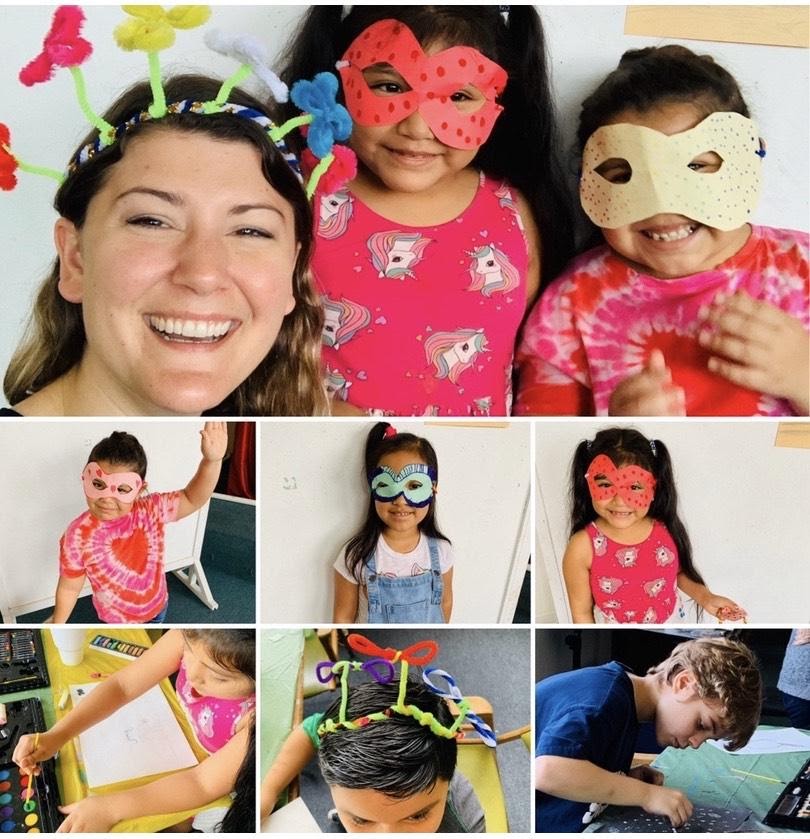
The important role of art therapists
The Canadian Art Therapy Association defines art therapists as “trained professionals with expertise in counselling psychology and fine arts.”
In Canada and the United States, art therapists must have at least a master’s degree or a master’s-level diploma in art therapy before practising. This graduate-level education includes supervised clinical practicum hours, which is 1,000 hours for Canadian art therapists.
When it comes to the role of the therapist, Schmitt said it is important to keep in mind that they are there to guide rather than instruct.
“Simply listening and providing a person the space and freedom to express goes a long way,” Schmitt said.
As many different art materials are provided in art therapy, people can choose what they like to work with.
“All art materials are all given for a reason,” Kuehn said.
Schmitt said she tries to provide as many kinds of materials as possible since “each material provides a different experience, process and degree of control.”
Grew said the best materials to work with really depends on what the clients are going through.
For example, if the client is holding in anger that needs to be expressed, clay can provide a healing experience for the client, since they can let their emotions out by punching and throwing the clay.
If the client is in a chaotic environment where they find themselves having no control in their life, it is better to have them use a medium which is easy to control, such as acrylic paint, markers or crayons.

A wide variety of beneficiaries
Art therapy is a great alternative for people who would like to explore themselves but don’t want to go through traditional therapy, Grew said.
“It is safer or easier for people to talk about the images they created than talk about themselves,” she said.
Kuehn said although everybody can benefit from art therapy, it is especially helpful for troubled youth.
“Art is another language for them to express themselves,” Kuehn said. “It is more fun and engaging since they are usually not interested in sitting down and talking.”
Schmitt also said art therapy can be especially helpful for children.
“If a child starts to create using their hands, they feel comforted and begin to verbally express what’s going on in their life,” Schmitt said.
Schmitt shared an example of a girl she works closely with, who lives with a difficult situation at home, to explain how art therapy can help children open up about their feelings.
As she worked on her art, she shared things that were emotionally disturbing her. As time progressed, she became more comfortable and began to produce works that spoke strongly to how she felt inside.

“Art therapy helps children express and have a different perspective,” Grew said.
Grew added that from her experience working with children and teens, she found the process of creating offers them an opportunity to understand and cope with their fear.
“Sometimes, holding images in their minds will make them seem very scary,” she said. “Putting those images down on paper helps the children realize they are not as scary as they thought.”
In order to help children with anxiety, Grew lets them draw their anxiety down as monsters and then talk about what they should do to cope with it.
“The act of bringing an emotion into the physical world is a profound and healing experience, and it often gives a sense of release to the individual,” Schmitt said. “Making something intangible, tangible, often makes it easier to dissect, work through, and ultimately heal.”
The American Art Therapy Association Research Committee suggests art therapy is also effective for people with substance use, developmental challenges, and aging and geriatric issues.
“I have so much faith in art,” Schmitt said. “I know that everyone is on their own levels and paths of growth that no matter what the experience they have with the art task I provide, it is helping them further heal.”
Camille Houde, co-president of Visual Arts Carleton (VAC), said she also strongly believes in the therapeutic power of art.
“Most of the time, art puts me in a state of flow,” Houde said. “When I’m doing art, I forget about everything else that’s going on and just enjoy what I’m doing—having that meditative zone-out is really relaxing.”
Virtual challenges and triumphs
COVID-19 launched Ottawa-based artists and art therapists into uncharted territory since in-person interactions are scarce.
VAC hosts weekly virtual meetings for artistic events and provides prompts to inspire students to create artistic projects at home in light of remote learning restrictions. Houde said artmaking is a great way to help people stay connected during the pandemic.
According to Houde, a core group of members has shown up to VAC events every week this semester and often stayed longer in the virtual meetings to continue their artistic discussions.
“Art is a very healthy and important part of their lives for a lot of people I know from VAC,” Houde said.
For the past five months, Grew said she has been working remotely to provide one-one-one virtual therapy sessions for her clients. She explained that she has taken workshops to learn how to conduct art therapy virtually, and that she has had to be more creative with her methods.
One of the challenges she has encountered delivering virtual art therapy is providing a distraction-free space for younger clients, where they feel comfortable talking without the concern of being overheard by other people in their home.
“Even though we try to set it up ahead of time, it is not always possible for them to have a space like that,” Grew said.
Prior to the pandemic, clients had access to the art material at art therapists’ studios. Now, they need to get their own supplies. Grew said she has found it challenging for her clients to find what they need for their sessions.
“There’s very few supplies out there,” she said. “If they go to a store to buy paint and there’s not any, they just can’t use paint for their sessions.”
Even though some of her clients have stopped taking sessions because they prefer to do art therapy in person, Grew said many are adapting well to the virtual method.
Grew is starting a virtual counselling website to provide people across Ontario with easy access to art therapy and other forms of counselling.
“Times like this have really opened the eyes of a lot of people, including myself,” Grew said. “Counselling can be done virtually and I think it’s here to stay.”
Featured image by Spencer Colby.


